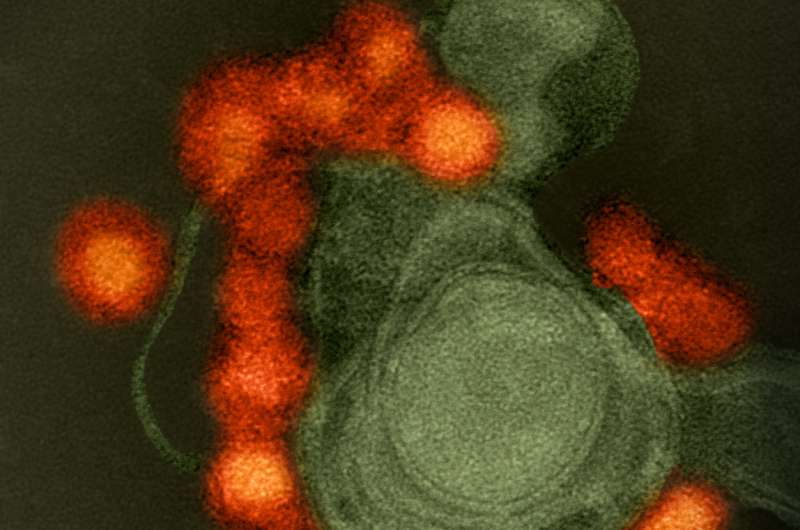Rhesus macaque model offers route to study Zika brain pathology

Rhesus macaque monkeys infected in utero with Zika virus develop similar brain pathology to human infants, according to a report by researchers at the California National Primate Research Center and School of Veterinary Medicine at the University of California, Davis, published June 20 in Nature Communications.
Rhesus macaques may be a suitable model system to study how Zika virus infection during pregnancy affects the fetus and to find ways to prevent, diagnose, mitigate or treat it, said Koen Van Rompay, research virologist at the CNPRC.
"This could be a useful model to test therapies for congenital Zika virus syndrome," Van Rompay said.
"The direct administration of Zika virus into the amniotic fluid caused brain disease in all fetuses, unlike other related studies. Since all fetuses are affected, therapies can be tested using fewer animals," said Lark Coffey, assistant professor in the School of Veterinary Medicine who led the study with Van Rompay.
Babies born to women who were exposed to Zika virus during pregnancy can display "congenital Zika syndrome," including microcephaly (unusually small head size), calcification of brain tissues and other signs of abnormal brain and eye development. It's thought that Zika virus-related brain damage may affect a larger number of children than those born with abnormally small heads.
Mice infected with Zika virus can show some similar effects, but both pregnancy and brain development are quite different in rodents and humans. Rhesus macaques are more similar to humans in physiology and in how their brain and central nervous system develops.
Brain lesions mimic those in Zika-affected babies
Van Rompay, Coffey and colleagues infected four macaque fetuses by introducing Zika virus directly into the amniotic sac. One fetus infected early in pregnancy died; three others infected later survived to term. The animals born at term did not have microcephaly, but they did have calcification of brain tissues and other brain damage. These findings contrasted with those from 3 age-matched fetuses that were not Zika inoculated and whose brains showed no signs of damage.
The brain lesions in animals mimic those in human newborns with congenital Zika syndrome, Van Rompay said.
The researchers found large amounts of Zika virus in brain tissues from infected animals, but not in cord blood. That is significant because it means that infection likely cannot be diagnosed in humans just by looking at easily accessible cord blood.
"Blood samples could be negative for virus, but there may still be virus in the brain," Van Rompay said.
"We have learned so much from this study," Coffey said. "This has helped us to better design new experiments, some of which are currently ongoing, to gain a better understanding of the effects of Zika infection on the fetus, and to test proof-of-concept of novel interventions, with the ultimate aim that these results can guide human clinical trials."
More information: Lark L. Coffey et al, Intraamniotic Zika virus inoculation of pregnant rhesus macaques produces fetal neurologic disease, Nature Communications (2018). DOI: 10.1038/s41467-018-04777-6


















